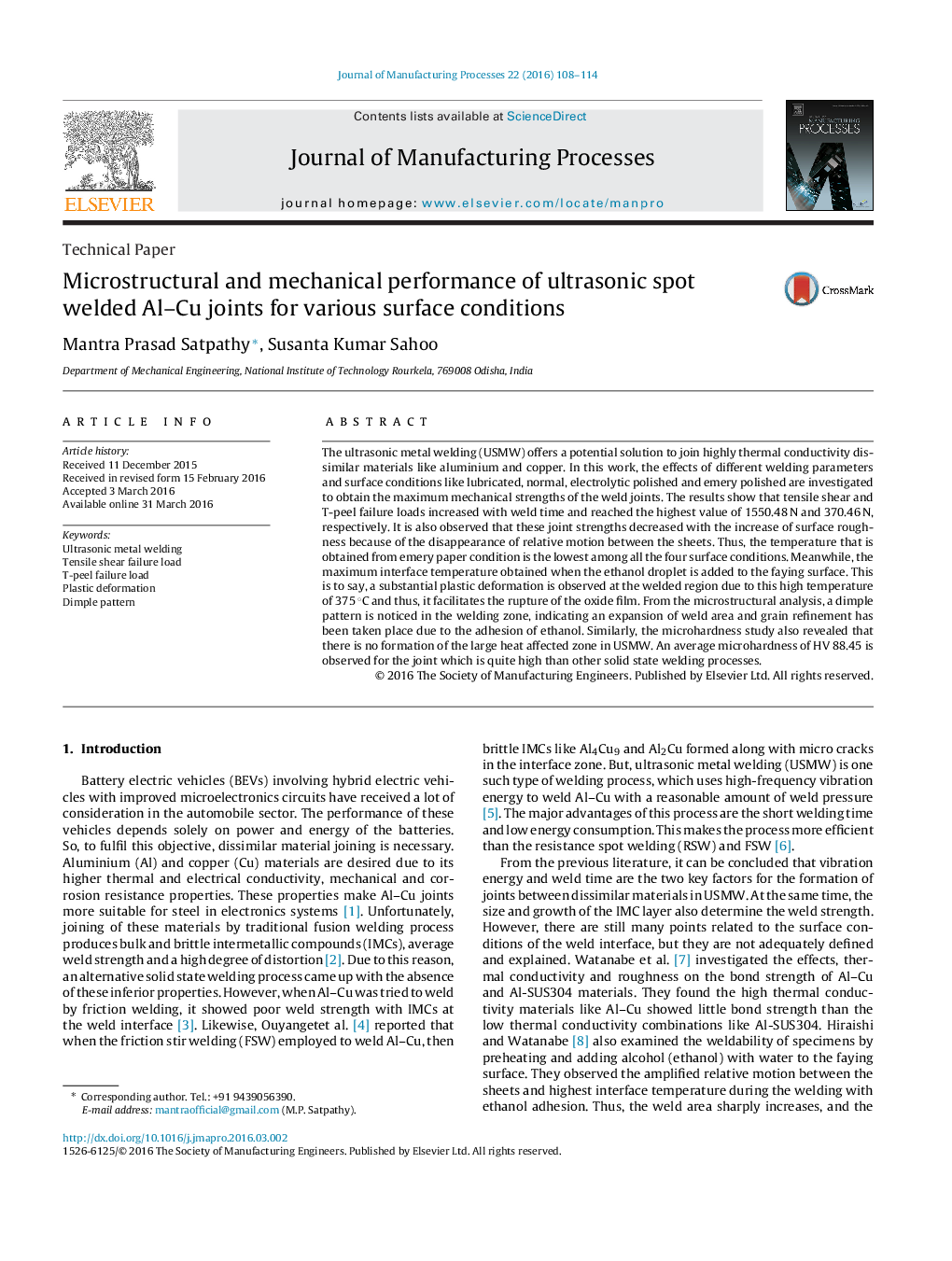| Article ID | Journal | Published Year | Pages | File Type |
|---|---|---|---|---|
| 1696817 | Journal of Manufacturing Processes | 2016 | 7 Pages |
•Aluminium and copper joints are produced using full factorial design of experiment.•Surface roughness effects are studied on tensile shear and T-peel failure loads.•Effects of surface conditions on interface temperatures are also investigated.•Weld quality is evaluated through microstructural analysis of fractured surfaces.
The ultrasonic metal welding (USMW) offers a potential solution to join highly thermal conductivity dissimilar materials like aluminium and copper. In this work, the effects of different welding parameters and surface conditions like lubricated, normal, electrolytic polished and emery polished are investigated to obtain the maximum mechanical strengths of the weld joints. The results show that tensile shear and T-peel failure loads increased with weld time and reached the highest value of 1550.48 N and 370.46 N, respectively. It is also observed that these joint strengths decreased with the increase of surface roughness because of the disappearance of relative motion between the sheets. Thus, the temperature that is obtained from emery paper condition is the lowest among all the four surface conditions. Meanwhile, the maximum interface temperature obtained when the ethanol droplet is added to the faying surface. This is to say, a substantial plastic deformation is observed at the welded region due to this high temperature of 375 °C and thus, it facilitates the rupture of the oxide film. From the microstructural analysis, a dimple pattern is noticed in the welding zone, indicating an expansion of weld area and grain refinement has been taken place due to the adhesion of ethanol. Similarly, the microhardness study also revealed that there is no formation of the large heat affected zone in USMW. An average microhardness of HV 88.45 is observed for the joint which is quite high than other solid state welding processes.
